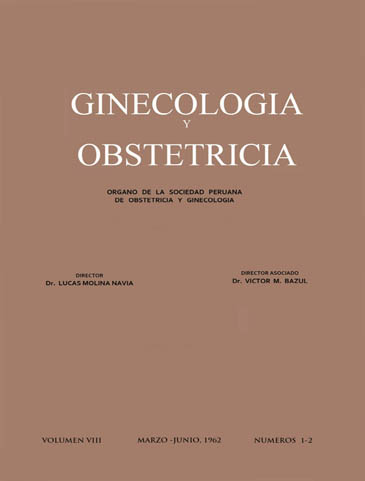Fibrinogenopenia acute and abruptio plancentae our therapeutic approach
DOI:
https://doi.org/10.31403/rpgo.v8i727Abstract
The author analyzes the criteria with which it has faced in his clinic consecutive acute syndrome fibrinogenopenia the box "placental abruption". Considers that addressed the causes of the decline in the levels of fibrinogen, is justified today than ever before proceeding to the early artificial rupture of membranes (medical birth Kreis) in order to trigger the job and also interfere with the release of tromboplásticas or fibrinolytic substances simultaneously and closely watching the changes taking place in the test and the clot fibrinogenemia curve. When treatment does not work obstetric results or blood incoagulability syndrome is emerging from a severe beginning with characters, I think that should be used without delay to the evacuation of the uterus by Cesarean section. Specific treatment of hypo- and afibrinogenaemia should include the timely administration - using the intravenous route - human fibrinogen. According to the experience of the Service, doses need not be as high as those that have been recommended by the American authors. Suffice generally 2 or 3 grams to reach critical levels (100 mg regimen. 0/100) and ensure coagulation. In addition they will be used generously blood and plasma transfusions, particularly when drugs are not available, as has happened in some cases that the author says. Given the high cost of treatment, recommended to administer the drug in cases of Caesarean section only after it has been evacuated uterus propitious moment to get the best results, deleted and the apparent root causes blood incoagulability box. It follows from the above that hysterectomy is a rare alternative (1 case in this series); when it is performed, rather it derives indications of contractile failure of the uterine muscle fiber. The author emphasizes that the results obtained in the course of the last five years in the 11 patients who had acute syndrome fibrinogenopenia and "placental abruption" - having the problem solved in 8 by the cesarean section - on a total of 138 cases, This represents a rate of 7.97%, have been good, if you think that the special mortality recorded was 9.09%, and that mortality in all the retroplacentarias bleeding (reached 1381 in the same period to 3.17%. The fetal stillbirth was very high, reaching 90.9%, while the overall rate casuistry that was recorded was only 63.4%.Downloads
Download data is not yet available.
Downloads
Published
2015-05-31
How to Cite
García Valenzuela, R. (2015). Fibrinogenopenia acute and abruptio plancentae our therapeutic approach. The Peruvian Journal of Gynecology and Obstetrics, 8(1-2), 36–43. https://doi.org/10.31403/rpgo.v8i727
Issue
Section
Artículos Originales
















